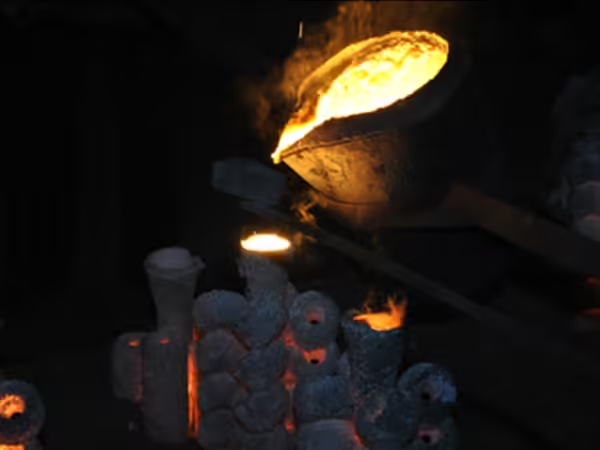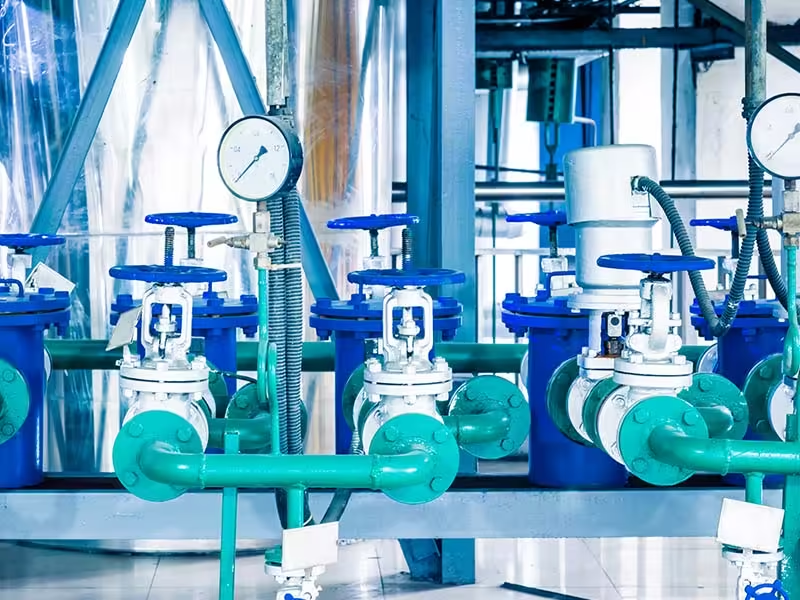Apa Itu Hastelloy: 9 Wawasan Penting
Selamat Datang ke Blog Saya!
Saya teruja untuk mempunyai anda di sini! Sebelum kita menyelami kandungan, saya ingin anda menyertai saya di platform media sosial saya. Di situlah saya berkongsi cerapan tambahan, berhubung dengan komuniti kami yang hebat dan memaklumkan anda tentang berita terkini. Begini cara anda boleh terus berhubung:
📘 Facebook: Shanghai Leierwo Industry Trade Co., Ltd.
Sekarang, mari kita mulakan perjalanan ini bersama-sama! Saya harap anda mendapati kandungan di sini bukan sahaja bernas tetapi juga memberi inspirasi dan berharga. Mari mulakan!
Jadual Kandungan
pengenalan

Apabila meneroka bahan lanjutan untuk persekitaran yang keras, persoalan biasa timbul: apakah itu Hastelloy? Keluarga unik aloi logam kalis kakisan ini telah mendapat populariti yang besar di seluruh industri seperti pemprosesan kimia, kejuruteraan marin, aeroangkasa dan penjanaan kuasa. Hastelloy bukan logam tunggal melainkan nama bertanda dagangan untuk siri aloi logam yang terdiri terutamanya daripada nikel, dengan pelbagai perkadaran molibdenum, besi, kobalt dan kromium.
Memahami apa itu Hastelloy adalah penting untuk pengilang, jurutera dan pakar perolehan yang mencari bahan berprestasi tinggi yang boleh menahan keadaan menghakis yang teruk. Artikel ini menyediakan sembilan cerapan penting tentang bahan yang berkuasa ini, membantu anda membuat keputusan termaklum tentang aplikasi, kekuatan dan batasannya.
Komposisi dan Jenis Hastelloy Aloi
Untuk benar-benar memahami apa itu Hastelloy, penting untuk melihat komposisinya terlebih dahulu. Hastelloy boleh didapati dalam beberapa gred, setiap satu direka untuk ciri prestasi tertentu. Jenis yang paling biasa termasuk:
- Hastelloy C-22: Menawarkan rintangan yang luar biasa kepada pelbagai persekitaran yang menghakis.
- Hastelloy C-276: Terkenal dengan rintangan yang cemerlang terhadap pengoksida dan klorida yang kuat.
- Hastelloy X: Kerap digunakan dalam aplikasi aeroangkasa suhu tinggi.
- Hastelloy B-2: Sesuai untuk mengendalikan asid hidroklorik dan agen penurunan yang agresif.
Variasi ini memberikan fleksibiliti dalam memilih aloi yang sesuai untuk keperluan industri tertentu. Kehadiran unsur-unsur seperti molibdenum dan kromium meningkatkan ketahanan terhadap pitting, retakan kakisan tegasan, dan kakisan celah.
Mengapa Hastelloy Terserlah: Faedah Utama
Memahami apa itu Hastelloy termasuk mengetahui kelebihan praktikalnya. Popularitinya bukan kebetulan; Hastelloy menawarkan pelbagai faedah yang menjadikannya pilihan utama untuk persekitaran yang mencabar:
- Rintangan kakisan yang unggul dalam media pengoksidaan dan penurun.
- Kestabilan suhu tinggi, terutamanya penting dalam industri kimia dan aeroangkasa.
- Sifat mekanikal yang sangat baik dalam keadaan tertekan.
- Kemudahan pembuatan dan kimpalan.
- Ketahanan dan tahan lama, walaupun di bawah pendedahan yang melampau.
Ciri-ciri ini menjadikannya bahan pilihan untuk peralatan seperti reaktor, penukar haba, salur tekanan dan sistem paip.
di mana Hastelloy Digunakan: Aplikasi Perindustrian

Untuk menjawab sepenuhnya apa itu Hastelloy, kita mesti mengkaji penggunaan industrinya yang meluas. Rintangan kakisan yang tidak dapat ditandingi dan prestasi tinggi telah membawa kepada aplikasi dalam pelbagai sektor:
- Pemprosesan Kimia: Reaktor, penukar haba, dan sistem perpaipan.
- Kejuruteraan Marin: Komponen dasar laut dan loji penyahgaraman.
- Penjanaan Kuasa: Reaktor nuklear, enjin turbin.
- Farmaseutikal: Peralatan pengeluaran terdedah kepada bahan kimia yang agresif.
- Aeroangkasa: Enjin jet, saluran ekzos dan zon pembakaran.
Aplikasi ini memerlukan bahan yang boleh menahan kerosakan kimia, mengekalkan integriti struktur di bawah haba yang tinggi dan berfungsi dengan pasti dalam tempoh yang lama.
Hastelloy lwn Aloi Lain: Jadual Perbandingan
Memilih bahan yang betul melibatkan membandingkannya dengan alternatif. Jadual di bawah membezakan Hastelloy dengan aloi popular yang lain:
| Harta benda | Hastelloy C-276 | Inconel 625 | Keluli Tahan Karat 316 | Titanium Gred 2 |
|---|---|---|---|---|
| Rintangan Kakisan | Cemerlang | Sangat Baik | Sederhana | Cemerlang |
| Toleransi Suhu | Sehingga 1100°C | Sehingga 980°C | Sehingga 870°C | Sehingga 400°C |
| kekuatan | tinggi | tinggi | Sederhana | Sederhana |
| kos | tinggi | Sederhana-Tinggi | rendah | tinggi |
| Kebolehkimpalan | bagus | bagus | Cemerlang | Sederhana |
Jadual ini membantu mengkontekstualisasikan apa itu Hastelloy dari segi prestasi, menunjukkan sebab ia sering dipilih untuk persekitaran yang melampau walaupun kosnya lebih tinggi.
Cabaran dan Had Penggunaan Hastelloy
Walaupun ia adalah bahan berprestasi tinggi, menjawab apa itu Hastelloy memerlukan mengakui batasannya. Ini termasuk:
- kos: Salah satu pilihan aloi yang paling mahal kerana kandungan nikelnya.
- Ketersediaan: Tidak tersedia secara meluas seperti keluli tahan karat standard.
- Keperluan fabrikasi yang kompleks: Memerlukan kimpalan dan pengendalian yang mahir.
Walaupun menghadapi cabaran ini, banyak industri menerima pertukaran kerana prestasinya yang luar biasa dalam persekitaran yang agresif.
Cara Mengenalpasti Hastelloy Tulen
Bagi pembeli dan jurutera yang bertanya apakah itu Hastelloy, memastikan keaslian bahan adalah penting. Hastelloy harus diperakui oleh pembekal yang dipercayai dan memenuhi piawaian ASTM. Langkah-langkah utama untuk mengenal pasti bahan tulen termasuk:
- Menyemak sijil ujian kilang.
- Mengesahkan komposisi kimia melalui spektroskopi.
- Mengesahkan sifat mekanikal dengan dokumentasi ujian.
- Bekerja dengan pembekal yang bereputasi untuk mengelakkan bahan tiruan.
Langkah pengesahan ini memastikan keselamatan, kebolehpercayaan dan pematuhan dengan keperluan projek.
Penyelenggaraan dan Ketahanan Komponen Hastelloy

Faktor lain dalam memahami apa itu Hastelloy ialah mengetahui keperluan penyelenggaraannya. Nasib baik, disebabkan oleh rintangan kakisan dan ketahanan yang tinggi, komponen Hastelloy memerlukan penyelenggaraan yang minimum. Walau bagaimanapun, amalan terbaik termasuk:
- Pemeriksaan berkala untuk memeriksa kerosakan mekanikal.
- Pembersihan pencegahan untuk mengeluarkan deposit terkumpul.
- Penyimpanan dan pengendalian yang betul untuk mengelakkan pencemaran dan degradasi.
Dengan penjagaan yang betul, peralatan Hastelloy boleh bertahan lebih lama daripada banyak bahan alternatif, menjadikannya kos efektif untuk jangka panjang walaupun harga permulaannya lebih tinggi.
Kesimpulan
Jadi, apakah itu Hastelloy? Ia adalah aloi premium yang memberikan prestasi unggul dalam persekitaran yang sangat menghakis dan suhu tinggi. Walaupun lebih mahal daripada banyak pilihan lain, faedahnya yang tiada tandingan membenarkan penggunaannya dalam aplikasi industri kritikal. Daripada loji kimia kepada aeroangkasa, bahan ini memainkan peranan penting dalam kejuruteraan moden.
Jika anda mencari kebolehpercayaan jangka panjang, kekuatan dan rintangan kimia, pertimbangkan untuk meneroka Hastelloy untuk projek anda yang seterusnya. Ia adalah pelaburan dalam keselamatan, ketahanan dan prestasi.
Soalan Lazim
Apa itu Hastelloy diperbuat daripada?
Hastelloy terutamanya terdiri daripada nikel, dengan pelbagai tahap molibdenum, kromium, besi dan kobalt bergantung pada gred.
Adakah Hastelloy lebih baik daripada keluli tahan karat?
Ya, dalam persekitaran yang sangat menghakis, Hastelloy mengatasi keluli tahan karat dalam kedua-dua ketahanan dan rintangan.
Di manakah Hastelloy boleh digunakan?
Ia digunakan dalam pemprosesan kimia, aeroangkasa, kejuruteraan marin, farmaseutikal dan penjanaan kuasa.
Bolehkah Hastelloy dikimpal?
Ya, tetapi ia memerlukan teknik dan kepakaran yang betul kerana komposisi aloinya yang kompleks.
kenapa Hastelloy mahal sangat ke?
Kos yang tinggi adalah disebabkan kandungan nikel dan proses pembuatan khusus, tetapi jangka hayat sering mengimbangi pelaburan awal.
Kategori Produk
- Bahagian Injap
- Bahagian Pam Air
- Bahagian Kotak Galas
- Bahagian Die Casting
- Produk Pam Keluli Tahan Karat
- Produk Pam Besi Tuang
- Bahagian Injap Untuk Kegunaan Kereta
- Bahagian Kenderaan
- Bahagian Injap Untuk Kegunaan Awam
- Bahagian Pam Vakum KF

